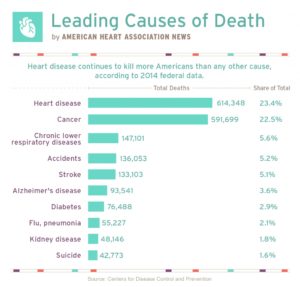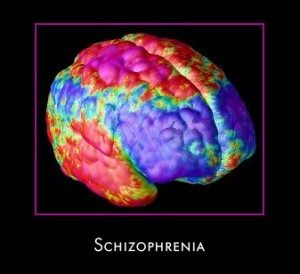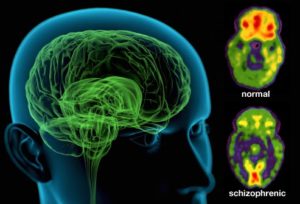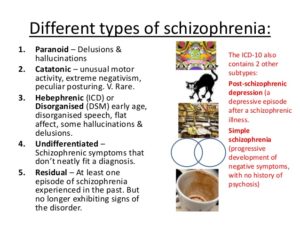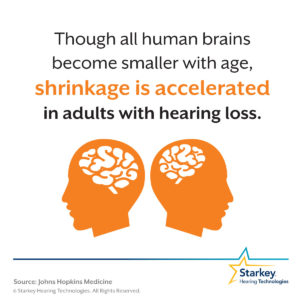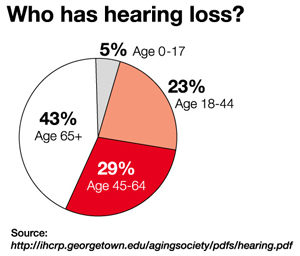Over the years news has been filled with stories about Ebola, breast cancer and Methicillin Resistant Staph Aureus (MRSA) which all gets a lot of press today. Would it surprise you to know that neither makes the list of the 10 deadliest diseases in the USA? Even more surprising, perhaps, is that several of the deadliest diseases, including the number one killer in the world, are at least partially preventable. It is right under are nose people but it doesn’t seem to be a topic of discussion in SCHOOL, you when young, taught at that grade level for the child to comprehend. It is not even a standard topic in college to pass on health education which obviously our country needs based on the statistics of disease and Obesity alone which causes a lot of the diseases after being obese for a long period of time which could have been prevented but for millions of people it is not the priority over food. Why? It takes an individual to want to make change in their life either drastically or gradually depending on how much to you need to or desire to lose weight. The people that surround you frequently and that are important to you helps if they are supporting that cause since it helps first you and all the people around you; like your children and even significant other to other family members (mom, close cousin, etc…) and even friends. If we all made this a cause our health care system would end up being a lot more affordable for all but we the society make it difficult with too many staying unhealthy. Wake up Americans take care of yourself to help yourself and all around you. Where a person lives, having the access to preventive care, and the quality of healthcare provided in a community are all factors that can either benefit or put people in that community into the risk of obesity.
Surprising news is that we, due to not regarding our health as a priority in many areas of the USA show the following statistics:
Of all the causes of death in the US, the leading top 10 causes account for nearly 75% of all deaths and the top 3 causes account for over 50% of all deaths in the country, with the main culprits remaining relatively consistent for at least the last five years.
The top leading 10 causes of death are:
- Heart disease (which can be prevented)
- Cancer (malignant neoplasms). Some cancers without question can be prevented (lung CA due to smoking)
- Chronic lower respiratory disease (same as above if we are referring to emphysema and its due to smoking)
- Stroke (cerebrovascular diseases) (this also in many cases can be prevented) Check out Monday’s article.
- Accidents (unintentional injuries)
- Alzheimer’s disease
- Diabetes (diabetes mellitus) If its diabetes II; usually due to obesity and diet.
- Influenza and pneumonia
- Kidney disease (nephritis, nephrotic syndrome, and nephrosis)
- Suicide (intentional self-harm).
1.)Heart Disease shows:
The #1 leading disease in the US!
- Deaths: 596,577
- Males: 308,398
- Females: 288,179
- Rate: 191.5
- Age-adjusted rate: 173.7
- Percentage of total deaths: 23.71%.
Heart disease is the leading cause of death for both men and women in the US and also the leading cause of death worldwide. More than half of the deaths that occur as a result of heart disease are in men.
Coronary heart disease costs the US $108.9 billion each year and is the most common type of heart disease.3
Heart disease is a term used to describe several problems related to plaque buildup in the walls of the arteries. Ending line clogging up the vessels closing up the pipelines our blood is carried through (vessels) to give oxygen to our blood tissues with taking carbon dioxide to the lungs for more 02 when its used up by our cells who carry oxygen to our tissues (02 is the fuel for our body to stay alive).
As the plaque builds up, the arteries narrow, making it more difficult for blood to flow and creating a risk for heart attack or stroke due to ischemia (Lack of oxygen to the tissues. If its lack of 02 to the heart angina to an MI if its the brain a TIA-transient ischemic attack or worse a CVA-stroke). Remember, prevention=protection is the first step so you don’t get this problem at all. Ending line the better you take care of yourself the higher the odds you will not get this problem.
How can you take this step in PREVENTION;
Protecting the heart
Lowering blood pressure and cholesterol can significantly lower heart disease risk.
- Follow instructions on medication usage if your already on it
- Make sure diet is low in salt, fat, saturated fat and cholesterol and high in fresh fruits and vegetables
- It is recommended that exercise in the form of a brisk 10 minute walk takes place 3 times a day, 5 days a week
- Avoid excessive alcohol use
- Quit smoking
- All steps listed above if you follow has even caused patients to stop medications completely because the changes listed above caused the problem in high statistics with the individual having no heredity.
